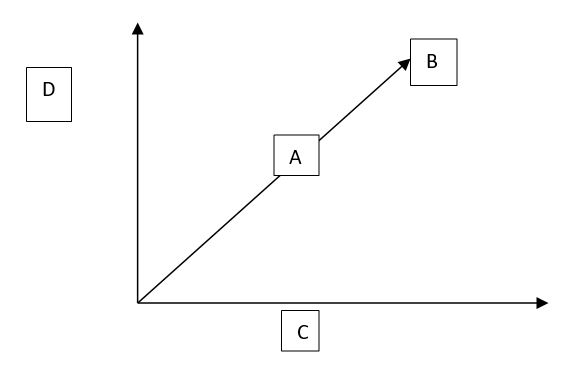Introduction
Obesity has become a household problem in all societies in both developed and developing nations. People have adopted lifestyles that expose them to the risk of developing this condition despite efforts by nutritionists and health specialists to advise the population about this issue. This essay evaluates the hypothesis that the functions of proteins have been neglected since it provides a small percentage of the body’s energy and its intake has been constant across populations.
The Concept of a Balanced Diet
The Protein Leverage Hypothesis proposes that the above two reasons play an important role in explaining the role of proteins in causing obesity. This hypothesis asserts that protein intake is not necessarily responsible for causing obesity. The main cause of obesity is determined by the difference between energy consumed and energy used by an individual (Simpson and Raubenheimer 2006).
This article examines the concept of a balanced diet in terms of the ratio of proteins to carbohydrates and fats. Research has established that most people develop obesity due to inactivity and not excessive consumption of protein-rich diets. Carbohydrates and proteins consist of bodybuilding and energy blocks in different proportions. Proteins offer just slightly above 15% of body energy while carbohydrates offer about 80% (Lusting 2012).
However, when a person consumes food that lacks proteins, there is a probability of overconsuming it to compensate for the lacking nutrient. The diagram below shows a balanced diet where the amount of protein and carbohydrates consumed are proportional to the nutritional requirements.

Key
- Intake target
- Balanced Diet
- Protein Eaten (1500KJ)
- Carbohydrates and Fats (9200KJ)
Rule of Compromise
The hypothesis explains that when human beings are faced with challenges regarding balancing their diets they usually prioritize protein intake. Human beings prefer carbohydrates to proteins whenever they are faced with a food shortage.
This does not mean that they will ignore carbohydrates and fats whenever there is an oversupply of proteins (Simpson and Raubenheimer 2006). This leads to a higher fat deposit in their bodies due to inactivity and this leads to obesity.
Implications
The first implication associated with the rule of compromise is that people will shift their preferences from a protein to a carbohydrate and fats-based diet. This scenario occurs in areas where carbohydrates are readily available, cheap, accessible, and palatable compared to proteins (Scheele 2011).
The protein effect will force consumers to take excess carbohydrates and fats to enable them to compensate for the deficient nutrient. Obesity sets in when an individual fails to use the excess energy produced by carbohydrates and fats consumed in large quantities.
Secondly, people will shift their focus to diets that contain a high percentage of proteins as a way of compensating for deficient nutrients. This means they will consume more protein-rich diets and less carbohydrate and fats (Scheele 2011).
This will lead to an energy reduction and the excess protein will be converted into energy. However, this energy will not be sufficient for the body leading to a reduced body mass even though this effect is short-lived.
Thirdly, an increase in protein consumption without a change in diet composition necessitates an increase in carbohydrate and fat consumption. This leads to a general increase in consumption of all food groups and thus it becomes inevitable to reduce an increase in body weight.
Lastly, there is a close relationship between exercise and obesity due to the energy produced and used by an individual. When an individual maintains a stable diet and reduces physical activities there are high chances of developing obesity (Simpson and Raubenheimer 2006). This explains why most people become obese after retirement and expectant women gain more weight after giving birth.
Interacting Consequences: Vicious Cycle
The above scenario occurs in a cycle that shows a link between energy consumption and use. Shifting the diet to contain low proteins and using low energy will increase body weight since there will be the overconsumption of fats and carbohydrates (Simpson and Raubenheimer 2006).
The result is usually accompanied by an increased production of gluconeogenesis that subsequently increases the demand for proteins. There will be the need to increase intake of high protein food to counterbalance this effect or else there will be the overconsumption of carbohydrates and fats.
The article explains that there is a high rate of obesity in developing nations compared to developed ones. This is explained by the illustrations above where high protein foods are expensive and not available to the majority (Scheele 2011). Therefore, they are forced to consume a lot of carbohydrates and fats to balance this effect.
Those who cannot afford to buy meat or fish will tend to eat foods rich in fats and carbohydrates leading to obesity. In addition, people who target foods with a high protein level are less likely to develop obesity compared to those that target diets with less level protein (Lusting 2012). People have a protein limit intake and cannot exceed this. This explains why cravings for meat, eggs, and fish are usually short-lived.
Conclusion
The protein level hypothesis has managed to illustrate various conditions that lead to obesity. The experiments conducted are a clear demonstration of the impacts of various protein and carbohydrate concentrations.
References
Lusting, R. (2012). Fat Chance: Beating the Odds against Sugar, Processed Food, Obesity and Disease. Westminster: Hudson Street Press.
Scheele, G. (2011). The Obesity Cure: Weight Control, Metabolic Health, Revitalized Youth with Power Amino Acids. California: NovaLife.
Simpson, S. J. and Dennis Raubenheimer. (2006). Obesity: The Protein Leverage Hypothesis. The International Association for the Study of Obesity. Obesity Reviews, 6, 133–142.